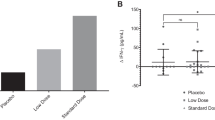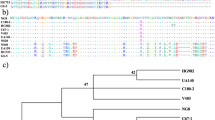Abstract
The interaction of blood group reactive substances in saliva with bacteria was investigated by testing saliva from persons with different blood groups in a bacterial aggregation assay with Streptococcus rattus HG 59, originally S. rattus BHT. For blood group A, saliva from 10 persons out of 11 aggregated S. rattus and for blood group O, saliva from 10 persons out of 16 aggregated S. rattus. For blood group B, saliva from 6 persons out of 8 aggregated S. rattus weakly and the average aggregation activity of blood group B was much lower than for blood group A or O. In addition, saliva from 3 non-secretors did not aggregate S. rattus.
The role of blood group antigens in bacterial aggregation was confirmed by inhibition studies with blood group specific sugars and various other sugars. GalNAc, specific for blood group A, inhibited bacterial aggregation by saliva whereas D-galactose, specific for blood group B, and D-fucose, specific for blood group O, did not. In addition, sialic acid, a major terminal sugar residue in mucins, also inhibited the bacterial aggregation. This study shows that the blood group and secretor status of a person may influence the interaction of saliva with bacteria in the oral cavity.
Similar content being viewed by others
References
Arneberg P, Kornstad L, Nordbö H & Gjermo P (1976) Less dental caries among secretors than among non-secretors of blood group substance. Scand. J. Dent. Res. 84: 362–366
Bratthall D & Carlen A (1978) Salivary agglutinin and secretory IgA reactions with oral streptococci. Scand. J. Dent. Res. 86: 430–443
Cheruka J, Golub E & Malamud D (1981) Comparison of lysozyme and saliva-mediated aggregation. J. Dent. Res. 60 (special issue A) Abstract 793
Douglas CWI (1983) The binding of human salivary α-amylase by oral strains of streptococcal bacteria. Arch. Oral Biol. 28: 567–573
Ellen RP, Bratthall D, Borgström M & Howley TR (1983) Actinomyces viscosus and Actinomyces naeslundii agglutinins in human saliva. Scan. J. Dent. Res. 91: 263–273
Ericson T, Pruitt HR & Wedel H (1975) The reaction of salivary substances with bacteria. J. Oral Pathol. 4: 307–323
Eriksson A, Partanen K, Frants RR, Pronk JC & Kostense PJ (1986) ABH secretion polymorphism in Icelanders, Åland Icelanders, Finns, Finnish Lapps, Komi and Greenland Eskimos: areview and new data. Annals of Human Biol. 13: 273–285
Gibbons RJ & Fitzgerald RJ (1969) Dextran-induced agglutination of Streptococcus mutans and its potential role in the formation of microbial dental plaque. J. Bacteriol. 98: 341–346
Gibbons RJ & Van Houte J (1975) Dental Caries. Annu. Rev. Med. 26: 121–136
Gibbons RJ & Qureshi JV (1978) Selective binding of blood group-reactive salivary mucins by Streptococcus mutans and other oral organisms. Infect. Immun. 22: 665–671
Golub EE, Cheruka J, Boosz B, Davis C, Malamud D (1985) A comparison of bacterial aggregation induced by saliva, lysozyme and zinc. Infect. Immun. 84: 204–210
Golub EE, Thaler M, Davis C & Malamud D (1979) Bacterial aggregating activity in human saliva: simultaneous determination of free and bound cells. Infect. Immun. 26: 1028–1034
Hogg SD & Embery G (1979) The isolation and partial characterization of a sulphated glycoprotein from human whole saliva which aggregates strains of Streptococcus sanguis but not Streptococcus mutans. Arch. Oral Biol. 24: 791–797
Hogg SD & Embery G (1982) Blood-group-reactive glycoprotein from human saliva interacts with lipoteichoic acid on the oral surface of Streptococcus sanguis cells. Arch. Oral Biol. 27: 261–268
Holbrook WP & Blackwell CC (1989) Secretor state and dental caries in Iceland. FEMS Microbiol. Immunol. 47: 397–400
Kashkett S & Guilmette KM (1978) Further evidence for the non-immunoglobulin nature of the bacterial aggregating factor in saliva. Caries Res. 12: 170–172
Koop HM, Valentijn-Benz M, Nieuw Amerongen AV, Roukema PA & de Graaff J (1989a) Comparison of different assays for aggregation of oral bacteria by human whole saliva. Antonie v. Leeuwenhoek 55: 109–122
Koop HM, Valentijn-Benz M, Nieuw Amerongen AV, Roukema PA & de Graaff J (1989b) Aggregation of oral bacteria by human whole saliva: influence of calcium, culture medium and bacterial cell concentration. Antonie van Leeuwenhoek 55: 277–290
Levine MJ, Herzberg MC, Levine MS, Ellison SA, Stinson MW, Li HC & Van Dyke T (1978) Specificity of salivarybacterial interactions: role of terminal sialic acid residues in the interaction of salivary glycoproteins with Streptococcus sanguis and Streptococcus mutans. Infect. Immun. 19: 107–115
Levine MJ, Tabak LA, Reddy MS & Mandel ID (1985) Nature of salivary pellicles in microbial adherence. In: Mergenhagen SE & Rosan B (Eds) Molecular Basis of Oral Microbial Adhesion (pp. 125–130) Am Soc for Microbiol, Washington DC
Malamud D, Appelbaum B, Kline R & Golub E (1981) Bacterial aggregating activity in human saliva: comparisons of bacterial species and strains. Infect. Immun. 31: 1003–1007
Mandel ID (1979) In defence of the oral cavity. pp 473–491 In: Kleinberg I, Ellison SA & Mandel ID (Eds) Saliva and Dental Caries (a special supplement to Microbiology Abstracts). Information Retrieval, Inc., Washington DC
Ørstavik D, Kraus FW & Henshaw LC (1974) In vitro attachment of streptococci to the tooth surface. Infect. Immun. 9: 794–800
Pollock JJ, Iacono VJ, Bicker HG, MacKay BJ, Katona LI & Taichman LB (1976) The binding, aggregation and lytic properties of lysozyme. In: Stiles HM, Loesche WJ & O'Brien TC (Eds) Proceedings: Microbial Aspects of Dental Caries (a special supplement to Microbiology Abstracts) Vol. 2 (pp 325–352) Information Retrieval Inc. Washington DC
Rundegren J and Ericson T (1981) An evaluation of the specificity of salivary agglutinins. J. Oral Pathol. 10: 261–268
Williams RC & Gibbons RJ (1975) Inhibition of streptococcal attachment on human buccal epithelial cells by antigenically similar salivary glycoproteins. Infect. Immun. 11: 711–718
Warren L (1959) The thiobarbituric acid assay of sialic acids. J. Biol. Chem. 234: 1971–1975
Author information
Authors and Affiliations
Rights and permissions
About this article
Cite this article
Ligtenberg, A.J.M., Veerman, E.C.I., de Graaff, J. et al. Influence of the blood group reactive substances in saliva on the aggregation of Streptococcus rattus . Antonie van Leeuwenhoek 57, 97–107 (1990). https://doi.org/10.1007/BF00403161
Revised:
Accepted:
Issue Date:
DOI: https://doi.org/10.1007/BF00403161




